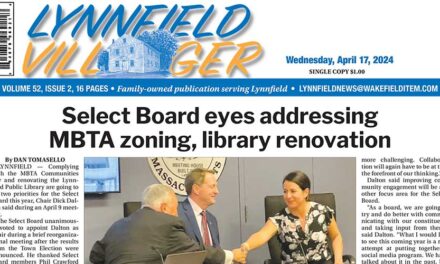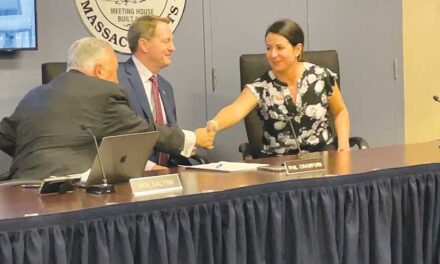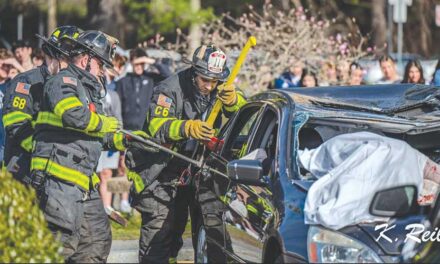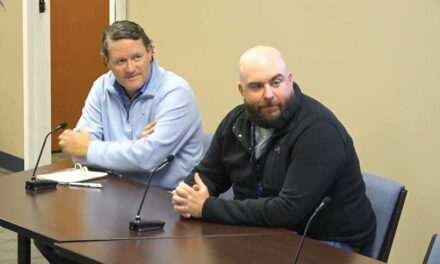Published in the November 22, 2017 edition
By DAN TOMASELLO
LYNNFIELD — The latest SAT scores are in, and Lynnfield High School students performed well on the revamped exam.
Before the SAT was overhauled, students were graded on three different areas on the exam — critical reading, writing and math for a combined score of 2,400. While the redesigned SAT still has a math section, the new version of the test has a combined section for evidence-based reading with an optional writing component for a total score of 1,600.
“We are excited to report our SAT scores were up this past year,” said Principal Bob Cleary during last week’s School Committee meeting. “It was a pretty sizable jump for us, and we are pretty excited about it. But the caveat to that is everybody’s test scores went up. It’s pretty typical considering this is the first year of the redesigned SAT. We talk about it every year that we need to be careful about comparing previous years’ scores to this year’s because it’s not the same group of kids, and that is especially true this year.”
The data revealed the average SAT reading and writing score for the Class of 2017 was 578. The average math score was 569. The average mean score for both sections of the SAT was 1,147.
Cleary noted the high school’s SAT scores “are the highest they have been in a few years.”
“As we look at these scores, we are excited that they have improved,” said Cleary. “But I think we are never really happy and we are always looking for improvement. We are always looking to see what we need to do to get where we need to be.”
There were 140 out of 154 members of the LHS Class of 2017 who took the SAT exam.
Cleary said Lynnfield High’s average SAT reading and writing score surpassed scores reported in North Andover, Rockport and Wakefield. The high school’s English scores were lower than the respective scores in Hamilton-Wenham, Masconomet, North Reading and Swampscott.
According to the data, the high school’s average SAT math score was higher than scores reported in Rockport and Wakefield. The high school’s SAT math scores were lower than Hamilton-Wenham, Masco, North Andover, North Reading and Swampscott.
The data revealed five members of the Class of 2017 received scores between 700 and 800 on the reading and writing exam. There were 50 students who received scores between 600 and 690 on the reading and writing exam. Sixty-eight students had scores between 500 and 590. There were 17 students who received scores between 400 and 490. There were no students who received scores between 390 and 200 on the SAT reading exam.
The SAT math exam’s results revealed 17 students had scores between 700 and 800. Thirty-three students received scores between 600 and 690. There were 64 students who had scores between 500 and 590. There were 23 students who received scores between 400 and 490. There were three students who had scores between 300 and 390 on the SAT math exam, and there were no students who received scores between 200 and 290.
Cleary said high school officials are pleased with the number of students who received SAT scores between 500 and 700 on both sections of the exam.
“It’s pretty solid SAT scoring,” said Cleary. “Our English language arts scores are probably right in the middle where they have been. Our math scores were in the lower range.”
Cleary attributed the increase in the SAT reading scores to the high school’s ELA curriculum initiatives.
“It has helped us stay competitive with those numbers,” said Cleary.
In the wake of changes made to the Common Core State Standards for math at the middle school level, Cleary said the high school is now utilizing a “more integrated approach to our ninth grade curriculum by bolstering some of the algebra 1 concepts with geometry.”
“We started that last year and we are continuing that this year,” said Cleary. “Doing an integrated combined curriculum really gives us what we need not just for a standardized test score, but also for what students need when they move on to algebra 2 and some of the higher level courses. Although we would like to see some higher math scores, we have identified a few things we think will be helpful.”
Cleary noted high school math teachers Joe DiBiase and Vin Mirasolo have undertaken a collaborative learning experience (CLE) pertaining to “breaking down some of the SAT practice questions that we have used.”
“We have integrated those instead of randomly doing five SAT problems, and are tying the topics into what they are doing in class,” said Cleary. “It goes hand-in-hand with what the lessons are.”
Cleary said high school officials have reached out to area schools to get an idea of what they are doing to prepare students for the SAT.
“We are all kind of copying each other, but what it comes down to is we are all doing very similar things with varying degrees of success,” said Cleary. “We are all offering some sort of SAT prep class whether it’s during the school day or after school.”
Cleary noted the high school has offered a SAT prep class during school for a number of years, but said it has not been popular with students.
“I don’t want to brag, but I think it’s because we have so many interesting curricula choices,” said Cleary. “Students are saying they would much rather be taking a music, art, history, science and math course instead of an SAT prep class, and they are working on (SAT prep) outside of the building.”
SC reaction
In response to a question from School Committee member Salvatore Cammarata about the number of students who took the SAT at LHS and area schools, Cleary said “statistically speaking, the difference of having between five and 10 kids in a higher or lower level” can skew a mean score.
“One of the problems with a mean score is a score of 100 and zero averages out to a 50 when you start talking about a mean,” said Cleary. “That doesn’t tell you anything about the kid who got a zero or the kid who got a 100. Typically, the larger your sample size, the less the outliers affect that mean. Masconomet had a class size of 329 as opposed to us at 154. That can make a big difference when you look at some of the performance numbers and how accurate those numbers might be. If there are 140 or 150 kids taking it and you get one kid who bangs out a 1,500 on their SATs, that could really jump our scores. It may look like we made giant improvements when it was really one kid who did really well.”
School Committee member Jamie Hayman inquired if the high school knows how many students pay for a SAT prep class outside of the high school.
Cleary said Community Schools’ SAT prep class’ enrollment has declined compared to previous years. He said the class runs at 6 p.m., which conflicts with students’ activities outside of school.
While the Community Schools program has declined in popularity, Guidance Department head Mike Moresco believes “a strong number of our students take SAT tutoring outside of school.”
“Most SAT private tutoring is not setting out to teach the student more geometry,” said Moresco. “It’s to teach them more test taking tips.”
Cleary agreed.
“I think learning how to take the test is far more helpful for the struggling student,” said Cleary. “With our top kids, the content is there and while it helps a little bit, those numbers aren’t increasing drastically because of some of those prep classes.”
Moresco also noted all LHS sophomores and juniors take the PSAT.
Hayman reiterated concerns made in previous years that he wants the high school’s SAT scores to improve.
“At the end of the day, it is about giving kids the most options and higher scores create more options,” said Hayman.




